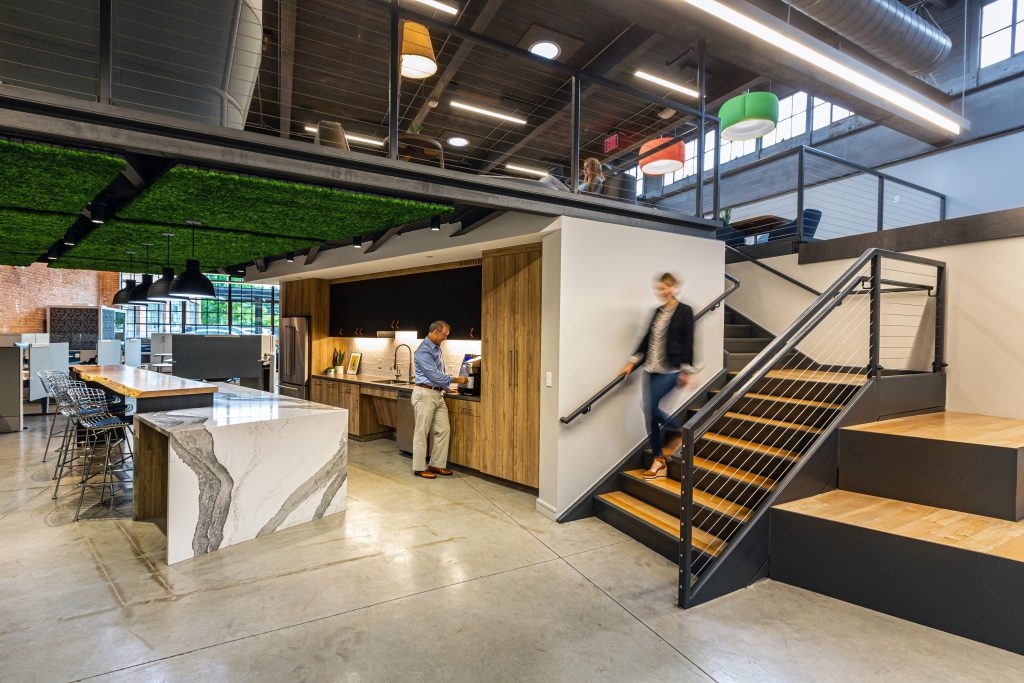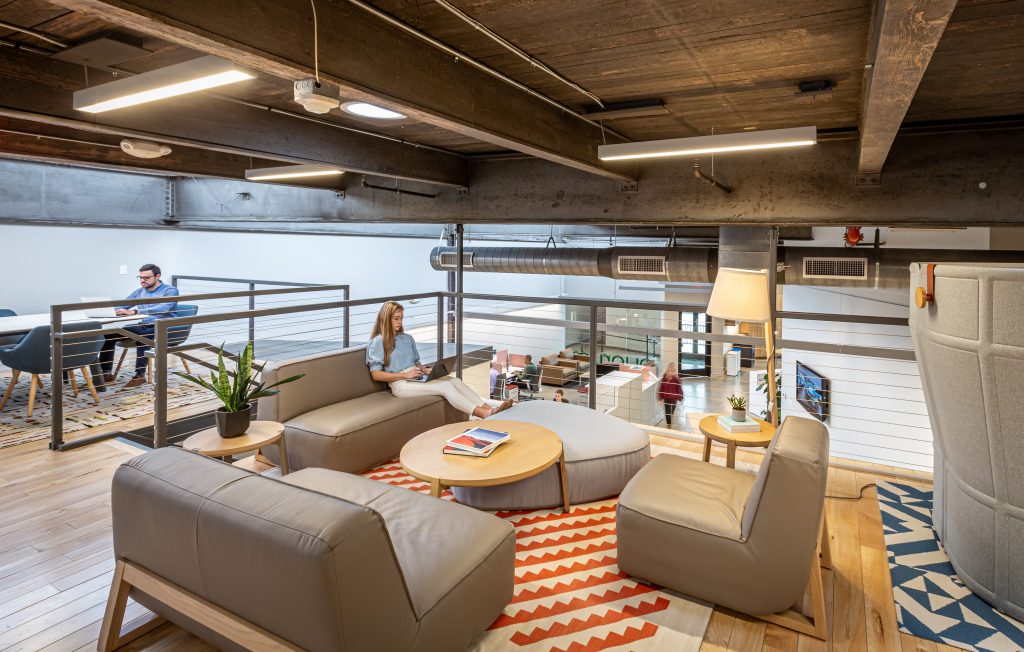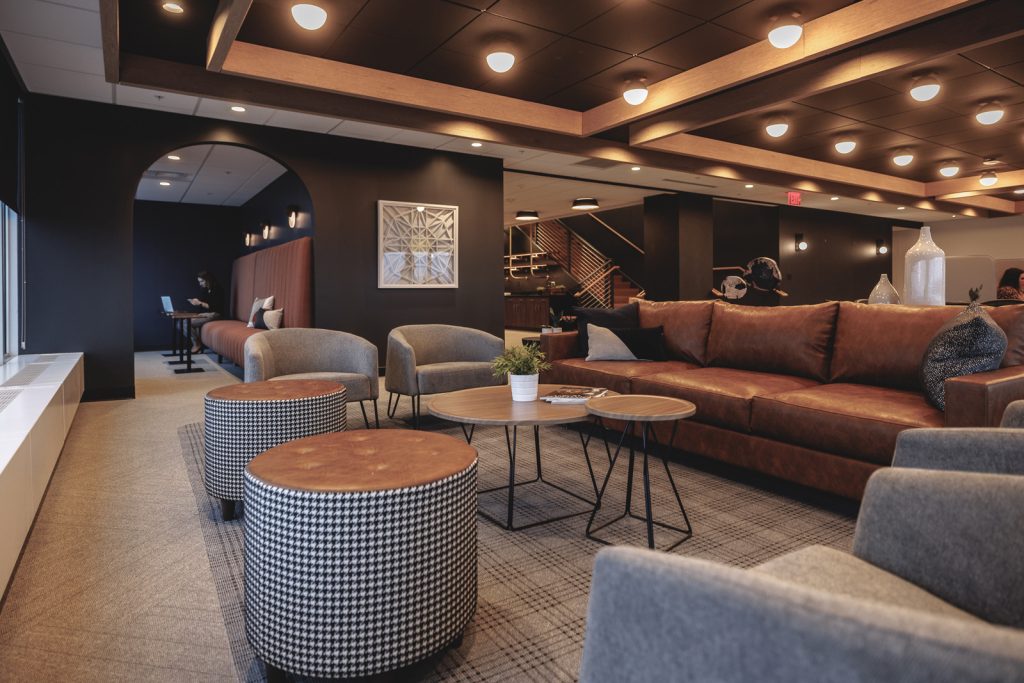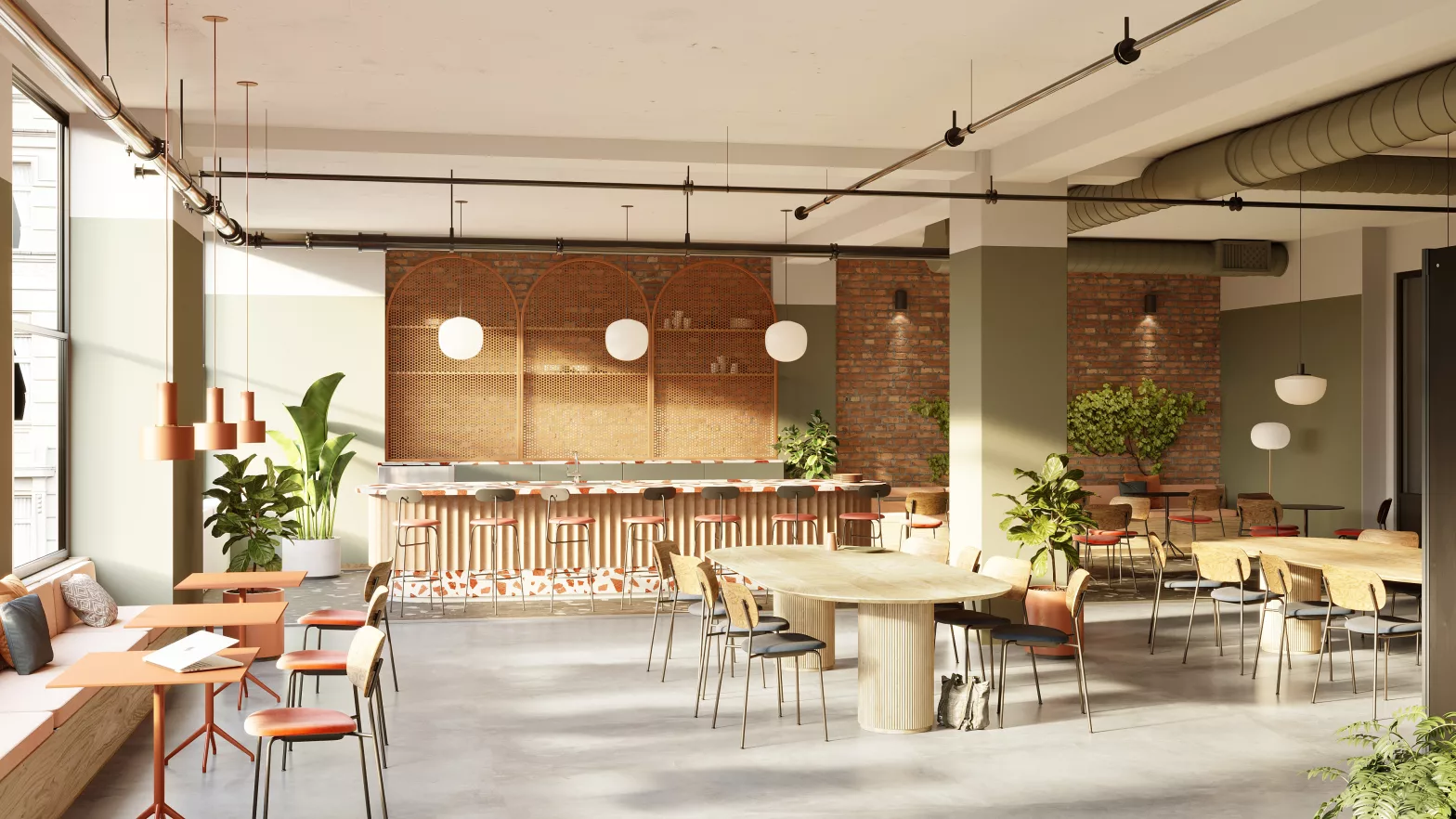Wondering how space planning can reinvigorate your workforce? Here’s how smart companies are rethinking their designs.
It’s not enough to just line up desks, turn on the lights and call people back to the office. The workplace must become a destination, a place that draws employees out of their homes, a place that inspires people and drives connection and culture.
The way to make that happen? Great space planning. So what exactly is space planning and why does it matter for workplace design and productivity? It’s the process used by interior designers and architects to ensure efficient use of floor space, and it’s vital to ensuring productivity, efficiency and overall happiness at work.
“It’s the part of interior design that’s not about the pretty wall color and cool desks,” Karin Taylor, a principal and director of interior design at Quorum Architects in Fort Worth, Texas. “We’re looking at the intricacies of how these people work and how to enhance the work environment for them.”
When done right, space planning can make a profound difference to people at work, says Lenny Beaudoin, executive managing director and global lead of workplace strategy at commercial real estate firm CBRE. It can make people more effective and efficient in their jobs, it can give them more control and more stability and it can boost wellbeing and happiness. If a company improves productivity by just 1% to 2%, those gains will exceed all the costs of real estate, he says.
Space planning is taking on more importance as companies rethink their office space for new hybrid work. They’re focusing on wellness and sustainability within the office, they are reshuffling real estate, they are shrinking square footage, they are making the office more purposeful and they are putting a priority on the employee experience.

Quorum.
Rule No. 1 for space planning: there is no one-size-fits-all. In the hybrid work world, the makeup of office space is constantly changing. Employers are studying their spaces, whether brand new builds or remodels, to find the right balance of workspaces for their company culture and determining what designs specifically drive productivity, happiness and those serendipitous interactions that lead to great ideas.
“Offices are becoming more of a cultural hub that unifies colleagues, especially with the normalization of hybrid work schedules,” says Taylor.
Often, C-level executives may not fully appreciate the consequences of decisions between private offices, shared space and the kinds of amenities to offer in a space, but they do know their company’s values, strategy and culture. That’s where great space planning should always begin, says Beaudoin of CBRE.
“A great design process is having someone who can listen intently to understand and ask better questions and then give clarity around those things that can then be expressed in design,” Beaudoin says. “A designer can show them how different space solutions and how different ways of working in an office environment can support that.”
To begin, architects may gather quantifiable and qualitative information, analyzing smart building data that tells a story of what happens inside offices and how different people use the space. That’s happening even more with new smart building technology which tracks occupancy and movement within a space. As many as 90% of organizations are using utilization data, up 11% from 2021, according to the 2022-2023 CBRE Global Workplace & Occupancy Insights survey.
Architects and designers may also look at space allocation, worker sentiment—such as what people value—and gain insight into the leadership’s vision. Taylor’s design team will often walk a company’s office, sketch out plans and plan for flexible office systems that shrink and grow over time.

Quorum.
CBRE’s team will gather sentiment around what’s not working, get a sense of their leaders’ and employees’ employees’ values and what they value in their workplace experience. Then designers typically go back 90 days after occupancy and ask additional questions to compare and contrast. “We generally find people to be far more satisfied with the outcome if there was a clear strategy,” Beaudoin says.
Overall, many employers are embracing activity-based work design, which involves creating multiple venues within an office that are tailored to different types of work. About half the time, people need to work around other people and the other half of the time, they need privacy for focus work. So if you need a library space for cranking out a proposal, you can do that with the etiquette and the space designed to do that. If you need to sit out in the open with colleagues and brainstorm, there’s a space that allows for that. If you need to do private focused work and phone calls, there are focus rooms, privacy pods, and phone booths available for privacy. This is a shift from decades ago when the office had cubicles and private offices and then shifted to open office settings.
“We’ve seen a return of private and closed office space in the form of focus rooms that are shared between people and can be used on the demand,” says Beaudoin.

The overall balance of space is also changing. Historically, the office was made up of desks and cubicles, or what Beaudoin calls “me space”—the offices, cubicles and individual work stations. Today, the amount of space dedicated to desks is declining, and companies are dedicating more space to collaborative areas like training rooms, breakout rooms and conference rooms, and allocating space to amenities like cafes, coffee shops, game rooms and workout facilities.
Designers are also thinking about how to best move people through the spaces where you actually see and interact with other people. The No. 1 reason people come back to the office in the hybrid work world is to be around other people.
Smart companies carefully plan amenity spaces to draw people to the office. Rather than creating multiple coffee spots, it’s better to build one great place that draws everyone. Not only is it good for people physiologically to get up and move but it creates energy and intensity around that particular space.
These companies also encourage leaders to plan specific in-office days for teams so the office space feels vibrant. That could mean a team comes into the office every Tuesday, for instance.
“If you’re swimming in space and there are a lot of empty seats, it’s less attractive for people to come in to work,” says Beaudoin. “No one likes to eat in an empty restaurant, no one likes an empty office.”
Good office planning, Beaudoin says, is like good urban planning. A good office has a town square. It has neighborhoods that reflect different teams and how they work. It has roads that lead to amenities and diverse work settings.
It’s important to be strategic and thoughtful about what gets people out of their seats during the day and has circulation of people where people will bump into each other, Beaudoin says. A bit of serendipitous interactions between colleagues that leads to innovation, connection and conversations that may not have happened over Zoom or email.
“Organizations, as they recalibrate for the future, are thinking about how to get really smart with their investments,” says Beaudoin. “That means focusing on what really motivates people to be in the office and their experience versus what traditionally they saw as entitlements. That, I’d say, is a pretty significant shift.”
